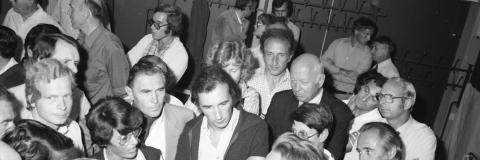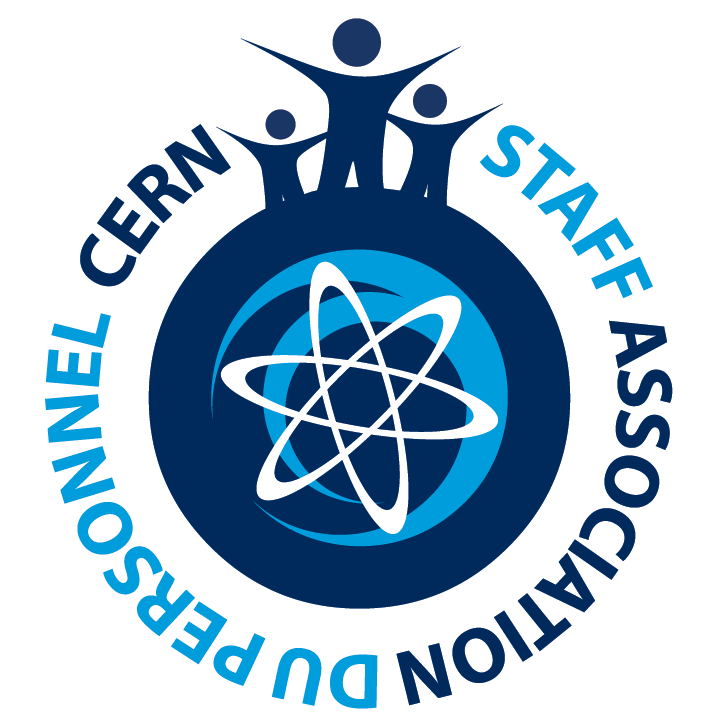(2sd Part) Discover the history of the CERN Staff Association in a few questions

2. Are the majority of scientists members of the Association and, if so, how do you defend their interests (here it would be interesting to know the specific nature of the Association's action in the particular environment of CERN)?
The 'scientists', i.e. the people sent by research institutes to CERN to carry on their research, are very rarely members of the CERN Staff Association. The principal reason for this is undoubtedly that the Association has neither the vocation nor the means to promote or defend their conditions of employment because these are the sole responsibility of their employers and the trade unions recognised by them. The CERN Staff Association is not recognized as an interlocutor by the research institutes and thus has no legal basis to interact with them. However, the Staff Association is the privileged interlocutor of the Management of CERN concerning the working conditions of these people when they are on site, and concerning the support that CERN provides to them when they live in the Geneva region. To fulfil this important role, the Association has for many years opened its 'parliament' (the Staff Council) to representatives of the 'scientists'.
More specifically, in recent years, the Association has worked with the Management of CERN to limit the impact of changes in national tax authorities' processes. These changes led to a significant increase in the tax owed by certain 'scientists'. In many cases, this made it much more difficult for those whom CERN must welcome to fulfil its primary mission to come to CERN. The Association also regularly intervenes to denounce the ever-increasing use of personnel seconded by the institutes to carry out, year after year, tasks that would normally fall to members of the personnel employed by CERN. Doing so when the budget of CERN is under severe pressure is not easy, but it is not enough to stop the Association. On the other hand, finding sustainable solutions in such a situation is very, very difficult.
3. The CERN Staff Association is a member of FICSA, which was founded in 1952. What was your working relationship with the other Associations and did you take any joint action?
The CERN Staff Association has been an associate member of FICSA for over 22 years now, but its relationship with FICSA goes further back in time. FICSA is a federation that initially brought together only associations and unions of UN agencies. It was on the initiative of the CERN Staff Association that FICSA formally opened up to associations and unions of international organizations outside the UN system. Indeed, the collaboration between the Staff Association and FICSA has always been close and constructive.Hence, in the interest of defending the international civil service in general, we felt it would be useful to be able to participate more directly in all the work of FICSA and its standing committees, while retaining our specificity. Our counterparts in the FICSA felt the same way, and the associate member status was instituted on 24 March 2000.
Members of the CERN Staff Association have long taken part in the activities of the FICSA Council, a privileged forum for discussion and reflection on staff representation and changes in employment conditions in international organizations. At every opportunity, our Association expressed and continues to express its support for the actions and initiatives of our UN partners within FICSA and reciprocally. Some years ago, representatives of the CERN Staff Association have led and chaired the FICSA Standing Committee on Legal Affairs.
Our contributions are also sometimes very concrete. For example, just over 10 years ago, we were asked to supervise the elections of representatives of the personnel in a FICSA member organization, in order to ensure that they were conducted properly and impartially. This was made possible and accepted by the various candidates because, even though we are an associate member of FICSA, our Association had no direct interest in the results of these elections.
Finally, during movements to defend the terms and conditions of employment of members of the personnel at CERN, we had on many occasions the in person support of the FICSA representatives. We have also had the opportunity to visit other international organization’s to support the actions of our colleagues, in close collaboration with the FICSA.
The CERN Staff Association is committed to promoting the exchange of ideas, as well as the unity of staff representative bodies, because only by uniting will we be the strongest.
4. The CERN Staff Association defends the interests of members of the personnel and associate members (if I'm not mistaken?). However, CERN often uses subcontractors. What is the Staff Association's position on subcontracting and has it changed over time?
No, the Association has always considered that the use of genuine European industry outside the CERN site was not open to criticism, provided that the Organization's overall competence was preserved. It was the failure to meet this requirement that led the Association to take specific action on certain occasions.
For example, in the mid-1990s, in a context of severe budget cuts and increasing workloads, the Management announced a policy of even greater reliance on on-site subcontracting. The Association, which before then already considered that the limit beyond which CERN began to lose control of strategic or sensitive activities had been crossed, was opposed to this policy which, in its view, would have generated conflicts and would have been against the interests of CERN and its members of the personnel.
In 1997, three organizations (the CERN Staff Association and two local trade unions - the CFDT de l'Ain and the Communauté genevoise d'action syndicale), led by the Association, came together to form the "Collectif des organisations représentant les membres of the personnel travaillant sur le domaine du CERN".
Since then, this Collective has met regularly to exchange any relevant information between all parties concerned: CERN Management, representatives of subcontractors’ employees and the Staff Association. Starting from 2005, the majority of then existing external contractors’ employees who were in fact missing permanent CERN staff were integrated as members of the personnel of CERN. To achieve this objective, the Staff Association was the driving force behind the development of a new type of CERN members of the personnel: local staff members. This was certainly a difficult process, but justified by the need for solidarity between 'cernois' and contractors’ employees.
5. To what extent do you think talking about unionism and the defence of CERN's workers can help to enrich its history?
The major scientific discoveries and technical achievements that have marked the history of CERN have contributed to its scientific reputation throughout the world and in every sphere. The primary mission of CERN was obviously not to innovate in the social field. However, we hope that we have given enough examples here of the social advances that the Association itself has most often triggered, to demonstrate that there is also a history of social partnership at CERN that deserves to be known. Some observers said a few years ago that CERN is "also a social laboratory"[1]. It is perhaps this dimension of CERN's activity that has helped, at least in part, to maintain the exceptional motivation and unfailing spirit of peaceful collaboration that exists and is shared between scientists and administrators, tradespeople and technicians, designers and maintenance staff, all coming here from Europe and all over the world with the firm desire to share in an adventure that is a message of confidence in the future.
[1] « Quand le CERN se veut aussi laboratoire social », Frédéric Lemaître, Le Monde, Decembre 30, 1997.
Interview réalisée par geneveMonde.ch avec quatre anciens présidents ou vice-présidents de l’Association: Marcel Aymon, Michel Benot, Joël Lahaye, Jean-Pol Matheys et Michel Vitasse.
